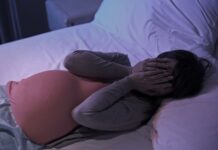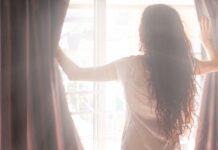In five minutes of web-browsing for a light therapy lamp, a motif repeats itself — beautiful models (nearly always women) with closed eyes, swooning in ecstasy. Dreaming of lying on a tropical beach in the warm sunshine?

The majority of scientists, clinicians, and lay persons who have put a bit of effort into reading about light therapy on our site and others know that it acts through the eyes to signal the biological clock and widely throughout the brain to synchronize circadian rhythms, stabilize sleep, and improve mood. Light therapy does not work through the skin — as modest exposure to ultraviolet radiation outdoors does to stimulate necessary Vitamin D synthesis. So how has this fantastical image not only persisted but multiplied? Most strikingly, there is even a website claiming to teach how to use a light box:
And it is a patient who comments on this website correctly: “I am not too sure if the eyes should be closed when using the light box. I was told otherwise keep them open but don’t look directly into the light box.” (From the website, Light Therapy Device.)

Another set of images shows patients sitting far from their lamps, as though it were a trendy piece of interior design.
We at CET plead for more attention to the imagery accompanying information about light therapy, so as not to mislead self-treaters and patients under clinical care using the lamps. Otherwise it just won’t work.
The rules for effective treatment are simple:
- High enough dosage — with distance from the lamp, the lux level reaching the eyes falls drastically, even though the lamp continues to seem bright. The package insert should state the recommended distance from the light box to the eyes, which varies from device to device. Contrary to manufacturers’ claims, it is impossible to receive 10,000 lux at a comfortable distance from a miniature light box. (Only one manufacturer supplies a sensor to measure 10,000 lux.)
- Place the light box in front of you, not to the side, to receive equal illumination of both eyes.
- Eyes wide open — to receive this “photic medication.” Avoid staring directly into the light: rather, concentrate on reading, breakfast or other activities on the table top in front of the lamp.
- See how the light boxes in the photos above shoot bright light upwards into the eyes, which is a formula for aversive glare, squinting, and turning away. CET recommends that the light come from above eye level, which provides comfortable treatment at equivalent high intensity.
See also: CET’s detailed recommendations for choosing a light box, and bright light exposure risks.






